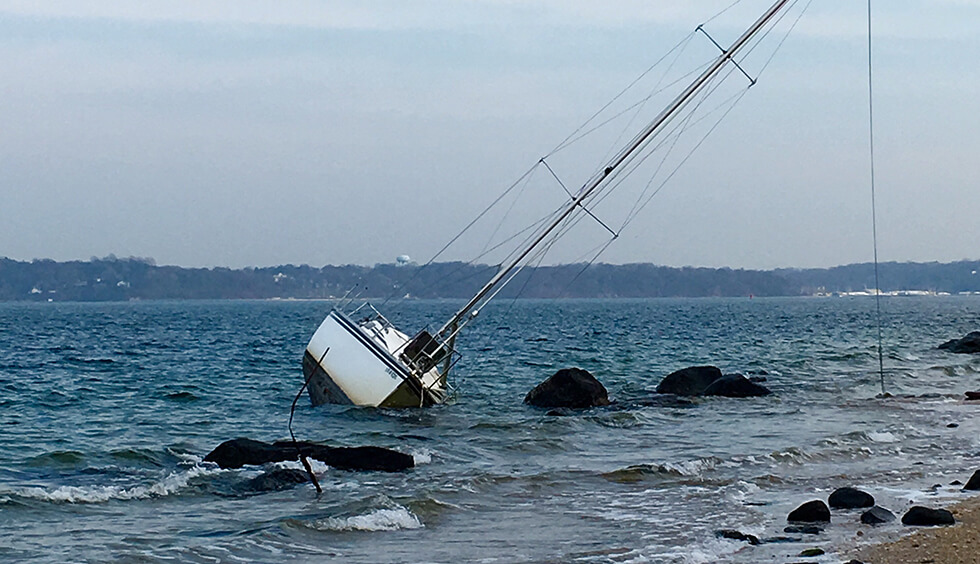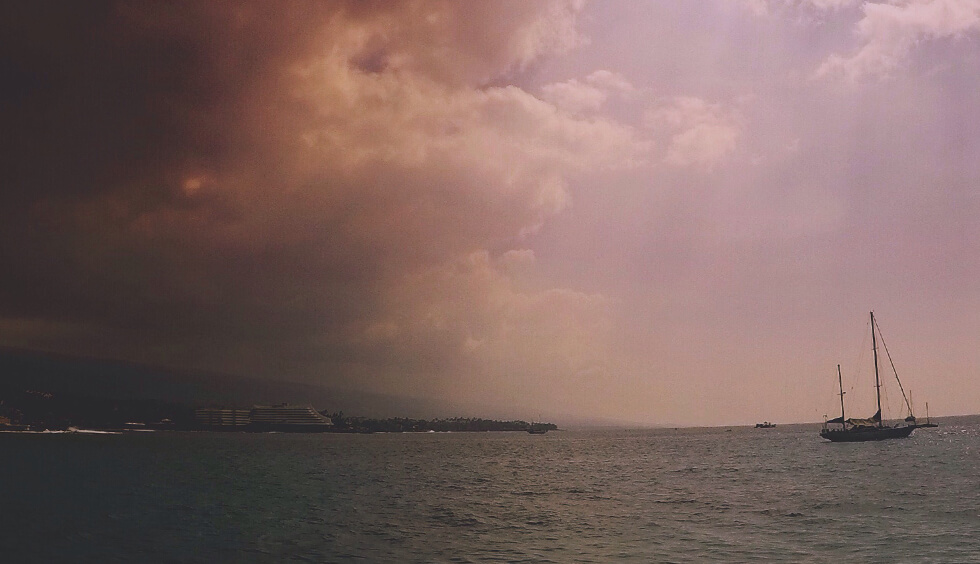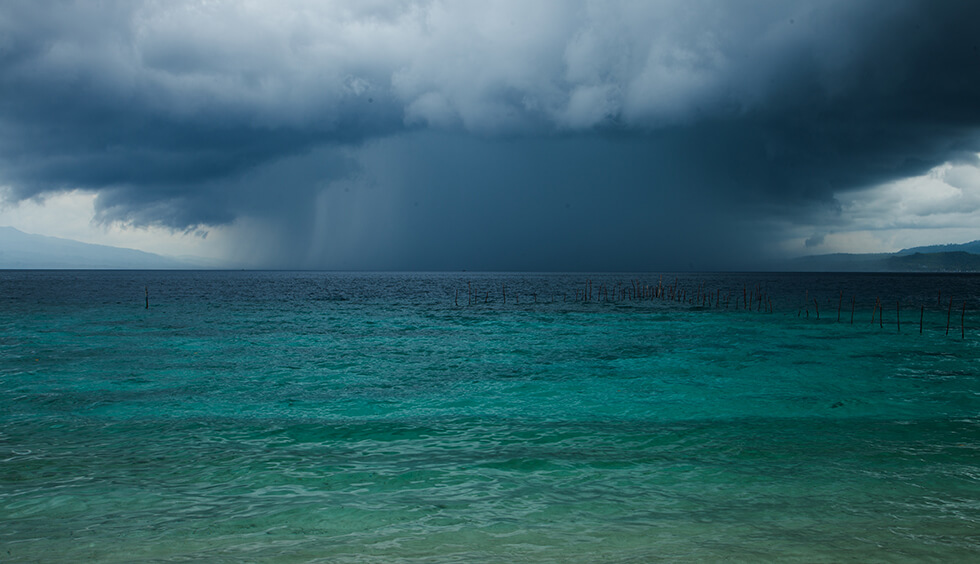Seagulls in the orchard, storm in the port. The saying goes that when seagulls are on land, it’s usually a sign of bad weather. And this is exactly what today’s article is about, how to prepare a boat for a DANA (acronym for “Isolated High Level Depression”).
This week in Ibiza and Formentera we have suffered a strong DANA and there have been moments of tension on the islands. In fact, this DANA has left numerous material damages, although fortunately, we do not know of any personal injuries.
Will you join us?
What is a DANA and why is it important to prepare adequately?
A DANA is a meteorological phenomenon that occurs when a low-pressure system separates from the currents surrounding the Earth and flows independently.
How a DANA forms
When the pocket of cold air becomes “isolated” and begins to interact with the warmer, moister air found in the lower layers of the atmosphere. The result of this mixture can be quite explosive: very intense storms, torrential rains and strong winds. Although it is a natural phenomenon, when it forms, it can generate really complicated weather, so it is important to be prepared if you are in an area where it can hapen.
In which regions this phenomenon is most common
The DANAs usually occur to the south of the current that causes them.
- In the northern hemisphere, it coincides with the situation of Spain in Europe and within our country they are more frequent in the peninsular Mediterranean slope. Outside our continent, it is frequent in the American east coast, the region of China-Siberia, the northeast of the Pacific and northwest of North America.
- In the southern hemisphere are more common in Australia and New Zealand, southern tip of South America and southern Asia.
Consequences that a DANA can have on unprepared ships
When a DANA hits, the impact on an unprepared vessel can be devastating. Here are some of the main consequences:
- Structural damage. Boats that are not well insured or that have weak points in their structure for whatever reason, can suffer serious damage. The strong gusts of wind and waves generated by a DANA can cause the hull to crack, masts to break and decks to be damaged. These structural problems can even lead to the sinking of the vessel if not addressed in time.
- Loss of control. Severe storms associated with a DANA can cause the vessel to spin out of control if the anchorage is not strong enough or if the moorings are not properly set. This could cause the vessel to drift into dangerous areas, collide with other vessels or crash into the shore. Flooding on board. Torrential rains accompanying a DANA can quickly flood a vessel that is not properly sealed. If hatches are not sealed tightly or bilge pumps are not working, water can accumulate on board, causing damage to electrical systems, the engine and other vital equipment.
- Failure of electrical and electronic systems. The combination of high winds, rain and waves can seriously affect a vessel’s electrical and electronic systems.short circuits, navigation failures and loss of communication are some of the problems that can arise, leaving the crew without key tools to handle the situation.
- Danger to the crew. When a vessel is unprepared to deal with a DANA, not only the vessel itself is at risk, but also the lives of the people on board. Extreme conditions can lead to accidents, falls overboard or emergency situations requiring evacuation, often in the midst of very difficult sailing conditions.
- Loss of the vessel. In the worst-case scenario, a vessel that is not prepared for a DANA can be lost completely. This can happen if it capsizes, if its structure breaks down, or if it is swept by currents to a place where it is impossible to recover it.
Failure to prepare a vessel for a DANA can result in severe damage, loss of control and, in extreme situations, total loss of the vessel and significant risk to the crew. Therefore, it is crucial to take the necessary steps to protect both the vessel and its occupants when a DANA is forecast.
The importance of being informed about weather warnings
When you venture out to sea, being aware of weather conditions is essential for your safety and that of your boat. Here’s why:
- Preventing imminent danger. The sea can be unpredictable, and conditions can change quickly from calm to dangerous. By staying informed about weather warnings, you can anticipate and avoid adverse situations such as storms, high winds or a DANA.
- Efficient trip planning. Knowing the forecast weather helps you plan your route and stops more efficiently. If you know that bad weather is coming in advance, you can adjust your itinerary to take advantage of good weather, avoid risky areas and ensure a smoother and safer sailing…
- Reducing the risk of emergencies. Information is power. And knowing the weather alerts allows you to take preventive measures in six areas that can avoid emergencies on board. These precautions significantly reduce the risk of a dangerous situation turning into a real emergency.
- Vessel protection. Weather warnings not only protect people, but also your boat. Avoiding going out to sea in adverse conditions or making sure you are in a safe harbor during a storm can prevent costly damage to your boat, from structural breakage to complete loss of the vessel.
- Crew safety Crew safety is the number one priority on any vessel. Knowing the weather conditions allows everyone on board to prepare for what’s ahead, whether it’s securing equipment, reviewing emergency procedures or simply being mentally prepared for a more challenging voyage. Being informed reduces stress and increases responsiveness in the event of an emergency.
- Ability to respond in real time. During the trip, conditions can change. We must stay informed about real-time weather updates. This way we can adapt our actions when necessary. In the event that a storm develops faster than expected, being aware gives you the opportunity to act immediately, such as changing course or seeking shelter, which could be the difference between a safe trip and a disaster.
The sea is wonderful but unpredictable, and weather information is your best tool to sail with confidence and safety.
What measures to take when a DANA is approaching
In general, in the days prior to the arrival of a DANA, warnings and alerts are issued on official web pages that will allow us to minimize the damage. Once these warnings are issued, we must be prepared for these virulent episodes, so we will take the following measures: Check the structure of the boat: hull, deck and seals.
- Check engine, electrical systems, bilge pump, and communication systems.
- Inventory safety equipment such as life jackets, flares, first aid kits, etc.
- Ensure that all crew are aware of emergency procedures and protocols.
- Never underestimate forecasts. It is better to err on the side of caution than to be unprepared.
- Gather and secure everything, especially on deck, reinforcing the sails so that they do not open.
When the arrival is imminent and looking at the sky and the black cloud is already visible, we can do two things: go sailing or stay in the anchorage. If the place is little or not crowded and you have a good anchoring system, and downwind with onshore wind, it would be advisable to stay in the anchorage, with the engine running and releasing all the chain. If there are many boats around and the wind pushes to the coast, it is advisable to go out to weather the storm away from the coast, although our instinct encourages us to stay in the anchorage. Of course, the level of experience of the crew must be taken into account. If we choose to sail, everyone should know the procedure and only one or two people should remain on deck steering the boat. At that time, it can be of great help to have blizzard goggles (or even snorkel goggles) because visibility with wind and rain at sea is almost nil.
Once the DANA has passed, we can carry out the following actions:
- Review of the vessel for structural damage.
- Review of engines and electrical systems.
- Clean and remove accumulated water to prevent corrosion and mildew.
- Report damage and contact insurance. Document the damages and communicate them to the company to initiate the necessary procedures.
Two additional tips to help you
Keeping a detailed record of inspections and maintenance interventions helps a lot to know the overall condition of the ship and helps us to make good decisions in difficult times. Reflecting with a critical eye on how we have approached a situation such as the passage of a DANA will help us to see what we can improve in future situations. And so much for today’s article on how to prepare your boat for a DANA. At Nautic Adventure we hope you don’t have to face it, but if it happens, you know how to act!
